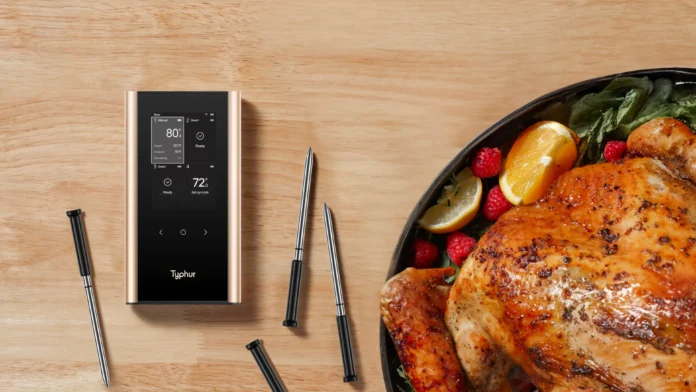As culinary technology evolves, the wireless meat thermometer has become a standout tool for both professional chefs and home cooks. These devices provide the precision of traditional thermometers but add the convenience of mobility and real-time monitoring via smartphone apps. This article delves into the technology behind wireless meat thermometers, explaining their components, functionality, and benefits.
The Basic Principle
Like traditional thermometers, wireless meat thermometers rely on a probe inserted into the meat to measure its internal temperature. The probe contains a sensor that detects the temperature and transmits this data to an external receiver, which could be a dedicated display unit or, more commonly today, a smartphone app. This sensor technology allows cooks to keep tabs on the cooking process without repeatedly opening the oven or grill, which can cause heat loss and impact cooking times.
Components of a Wireless Meat Thermometer
Wireless meat thermometers consist of two main parts: the probe and the transmitter. Here’s how each component works:
- The Probe: The probe is typically made of durable, heat-resistant metal, often stainless steel, and contains a temperature sensor (usually thermocouples or thermistors). Thermocouples generate a small voltage based on temperature differences, while thermistors change their electrical resistance in response to temperature. Both methods can accurately read temperature changes in seconds, providing real-time updates.
- The Transmitter: The transmitter is usually attached to the end of the probe that remains outside the cooking environment. This device receives the temperature data from the sensor and sends it to the display or smartphone app. In truly wireless models, the transmitter may even be inside the probe itself, designed to withstand heat from all sides while cooking. Transmitters use Bluetooth or Wi-Fi to connect with an external device, allowing users to monitor the cooking process remotely.
- Smartphone Integration: Most wireless thermometers now come with smartphone apps that display real-time temperature readings, set alarms, and recommend ideal temperatures for various types of meat. Some apps can even predict when the meat will be fully cooked based on its initial temperature and heat pattern. This predictive feature is powered by algorithms that track temperature changes over time.
Connectivity: Bluetooth vs. Wi-Fi
Wireless meat thermometers usually use Bluetooth or Wi-Fi to transmit temperature data. Both have advantages and limitations:
- Bluetooth: Bluetooth connectivity is ideal for short-range monitoring, typically within a 30-50-foot radius. This is perfect for home kitchens where the cook is nearby. Bluetooth is reliable, easy to set up, and generally consumes less battery.
- Wi-Fi: Wi-Fi-enabled thermometers are ideal for larger cooking areas or professional kitchens where the cook may be further away from the oven or grill. With Wi-Fi, users can monitor their food from anywhere with internet access, whether they’re inside the house or even in a different location.
Accuracy and Safety Benefits
One of the main reasons for using wireless meat thermometers is accuracy. Cooking meat to the correct internal temperature is crucial for both flavor and safety. Undercooked meat can lead to foodborne illnesses, while overcooked meat becomes dry and tough. A wireless thermometer provides precise control over the cooking process, ensuring meat is cooked to the desired temperature without guesswork.
Additional Features and Future Trends
Many wireless meat thermometers now come with advanced features like multiple probes (for cooking different types of meat simultaneously), custom alerts, and even voice assistance integration. As artificial intelligence develops, future thermometers may include smart algorithms that adjust the cooking process in real time, offering a more seamless cooking experience.
Also Read: Choosing the Right Underground Communication Technology
Conclusion
Wireless meat thermometers combine traditional thermometry with cutting-edge wireless technology, transforming cooking into a precise and convenient task. With innovations like Bluetooth and Wi-Fi connectivity, smartphone integration, and advanced algorithms, these devices offer a valuable upgrade to any kitchen. Whether you’re a culinary enthusiast or a casual cook, a wireless meat thermometer is a tool that ensures consistently great results and greater peace of mind.

